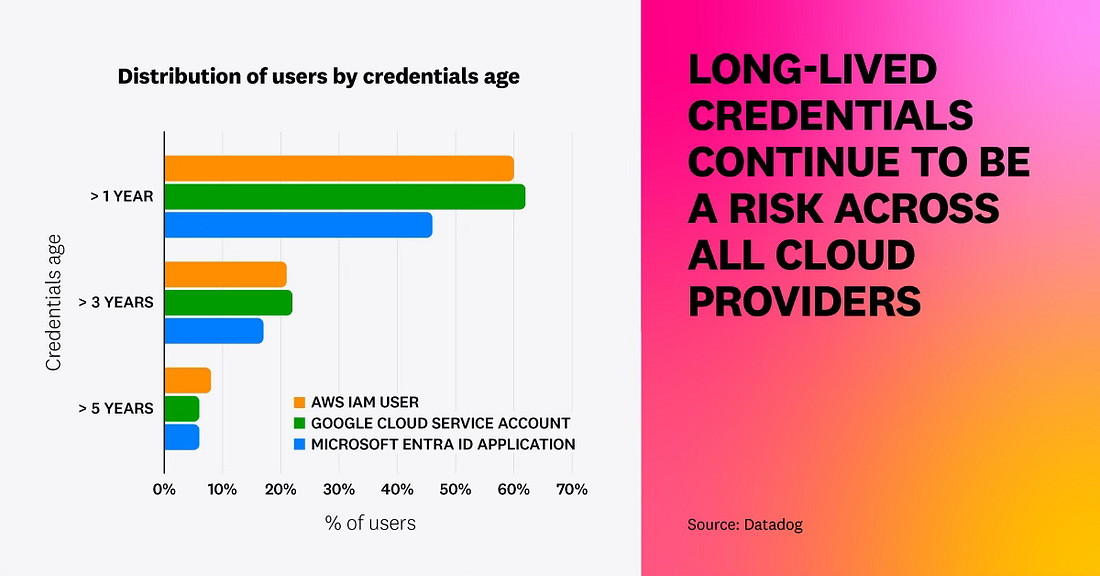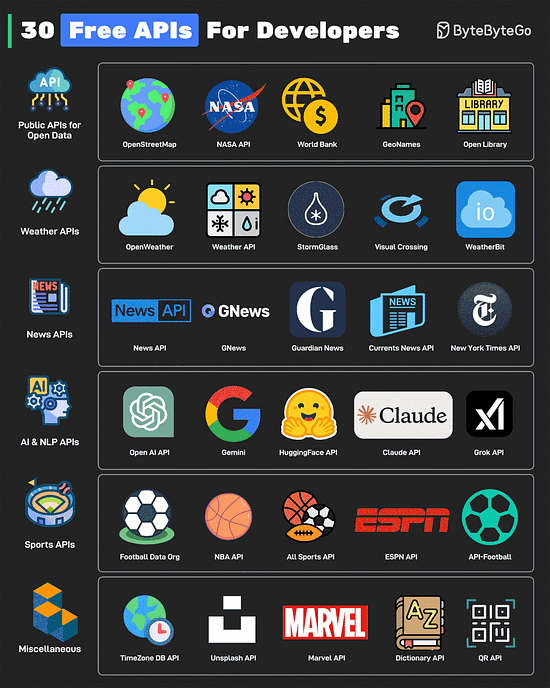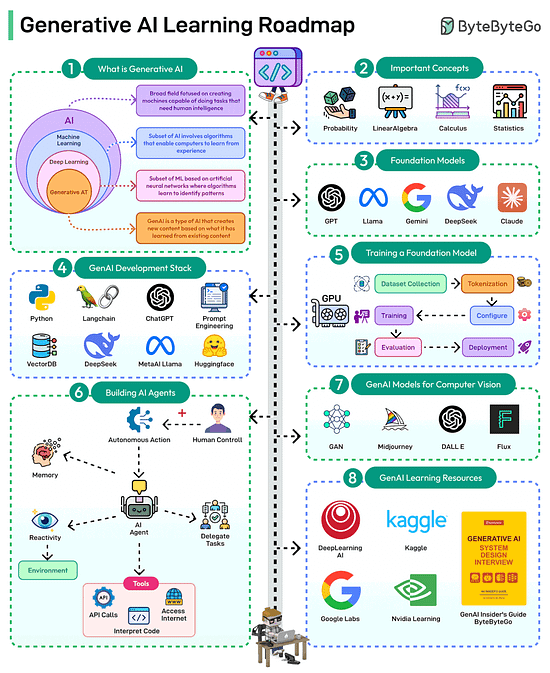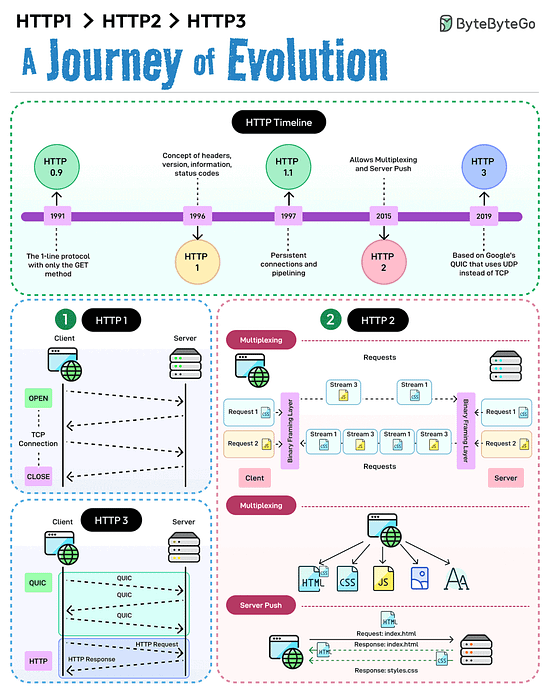- Mailing Lists
- in
- EP152: 30 Free APIs for Developers
Archives
- By thread 5369
-
By date
- June 2021 10
- July 2021 6
- August 2021 20
- September 2021 21
- October 2021 48
- November 2021 40
- December 2021 23
- January 2022 46
- February 2022 80
- March 2022 109
- April 2022 100
- May 2022 97
- June 2022 105
- July 2022 82
- August 2022 95
- September 2022 103
- October 2022 117
- November 2022 115
- December 2022 102
- January 2023 88
- February 2023 90
- March 2023 116
- April 2023 97
- May 2023 159
- June 2023 145
- July 2023 120
- August 2023 90
- September 2023 102
- October 2023 106
- November 2023 100
- December 2023 74
- January 2024 75
- February 2024 75
- March 2024 78
- April 2024 74
- May 2024 108
- June 2024 98
- July 2024 116
- August 2024 134
- September 2024 130
- October 2024 141
- November 2024 171
- December 2024 115
- January 2025 216
- February 2025 140
- March 2025 220
- April 2025 233
- May 2025 239
- June 2025 303
- July 2025 182
EP152: 30 Free APIs for Developers
EP152: 30 Free APIs for Developers
7 Key Facts About the State of Cloud Security (Sponsored)To better understand the vulnerabilities and threats facing modern DevOps organizations, Datadog analyzed security posture data from a sample of thousands of organizations that use AWS, Azure, or Google Cloud. In this report, you’ll gain valuable cloud security insights based on this research including:
This weeks’ system design refresher:
8 Most Important Tips for Designing Fault-Tolerant System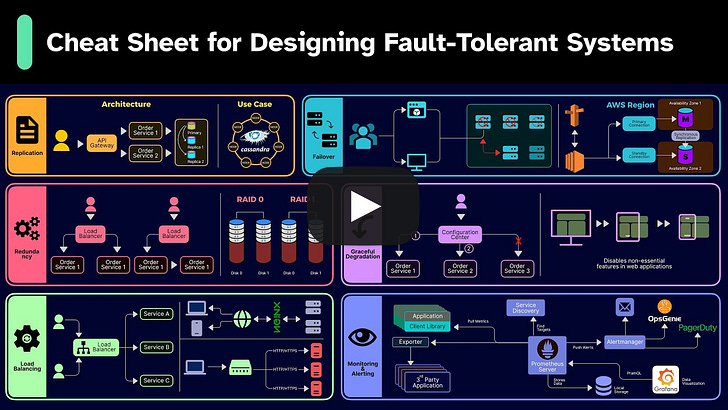 30 Free APIs for DevelopersAPIs are the backbone of modern software development. Whether it is a hobby project or a real-world application, developers need APIs. These APIs (some completely free and some with free tiers) can help kickstart development.
Over to you: Which other API will you add to the list? Hands-on debugging session: instrument, monitor, and fix (Sponsored)Join Lazar from Sentry for a hands-on session where you’ll build it, watch it break, debug it, and go from “no idea what’s wrong” to fixing issues—all in one go. Since we’re serious developers (obviously), we’ll use Next.js and:
The Generative AI Learning RoadmapGenerative AI is a type of AI that can create new content based on what it has learned from existing knowledge. It has the potential to revolutionize human learning. Here’s a GenAI roadmap with learning resources:
Over to you: What else will you add to the GenAI learning roadmap? HTTP/1 -> HTTP/2 -> HTTP/3HTTP 1 started in 1996 followed by HTTP 1.1 the very next year. In 2015, HTTP 2 came about and in 2019 we got HTTP 3. Structure of URLDo you know all the components of a URL? Uniform Resource Locator (URL) is a term familiar to most people, as it is used to locate resources on the internet. When you type a URL into a web browser's address bar, you are accessing a "resource", not just a webpage. URLs comprise several components:
SPONSOR USGet your product in front of more than 1,000,000 tech professionals. Our newsletter puts your products and services directly in front of an audience that matters - hundreds of thousands of engineering leaders and senior engineers - who have influence over significant tech decisions and big purchases. Space Fills Up Fast - Reserve Today Ad spots typically sell out about 4 weeks in advance. To ensure your ad reaches this influential audience, reserve your space now by emailing sponsorship@bytebytego.com. © 2025 ByteByteGo |
by "ByteByteGo" <bytebytego@substack.com> - 11:37 - 1 Mar 2025
